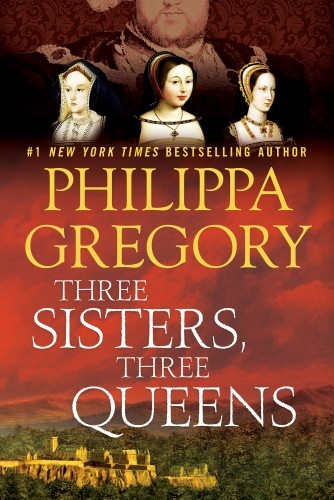
Three Sisters, Three Queens
The Plantagenet and Tudor Novels
کتاب های مرتبط
- اطلاعات
- نقد و بررسی
- دیدگاه کاربران
نقد و بررسی

October 31, 2016
Actor Amato, who has read three of Gregory’s previous titles as audio editions, is terrific in Gregory’s latest historical novel set in Tudor England. She deftly portrays the passions, ambitions, and catastrophes of three sisters from childhood through adolescence to queen-hood. She takes listeners along on the roller-coaster ride from ecstasy to agony and back again for the three 16th-century royals: Queen Katherine (first wife of Henry VIII), Queen Margaret (sister of Henry, married off at 16 to James IV of Scotland) and Queen Mary (sister of Henry and third wife of Louis XII of France). Amato’s portrayal of protagonist Margaret is vivid and compelling. She also creates captivating voices and personalities for their husbands and lovers, as well as their infamous brother, Henry. Gregory’s historical novels are sheer entertainment; the combination of Gregory and Amato is pure pleasure. A Touchstone hardcover.

July 1, 2016
The latest installment of Gregory's Tudor Court series fleshes out the sparse documentation on Queen Margaret of Scotland.This narrative of three queens is told strictly from the perspective, often acerbic, often envious, of only one: Margaret Tudor, who became Queen of Scots when she married, by long planned arrangement, King James of Scotland in 1502. From the age of 12, Margaret delights or sometimes torments herself by making invidious comparisons between herself, her younger sister, Mary, and her sister-in-law Katherine of Aragon, dubbed "Arrogant" by Margaret. As the oldest child of Henry VII, the invading Tudor who deposed Richard III, Margaret has a cynical perspective on her siblings. Arthur, firstborn son, was raised to be king, while Henry, second son, was indulged and spoiled (which, Margaret implies, will have disastrous consequences later). After Arthur dies unexpectedly in Wales, Katherine returns to court and, for a time, much to Margaret's barely suppressed glee, is in financial limbo while her marriage to the new heir, Harry, is negotiated. Once married to James, Margaret quickly supplies a crown prince. But King Henry's decision to invade France, Scotland's ally, subverts the Perpetual Peace Margaret's nuptials were intended to cement. James is forced to invade England's border shires, and an army, commanded by Katherine, does battle with the Scots, kills James, and brings back his body as a trophy as well as his bloodied coat, which Katherine sends to Henry as proof of her military prowess. This not only outrages Margaret, but profoundly destabilizes her position. The young widow makes the strategic error of marrying her former meat carver, a charming but false-hearted earl, Archibald. The fractious Scots lairds and their French handlers exile Margaret, taking charge of her two sons. There follows a series of unfortunate, or fortunate, events, depending on how they advance or undermine Margaret's status, not to mention her right to precede her sister and sister-in-law into the dining hall.Gregory's take on the (largely male-determined) fortunes of three Tudor women is venal, petty, and jaundiced but never dull.
COPYRIGHT(2016) Kirkus Reviews, ALL RIGHTS RESERVED.

July 1, 2016
Once again, the prolific Gregory (The Taming of the Queen, 2015) mines the annals of Tudor history to fashion a fictional tale as steeped in history as it is in intrigue and family dysfunction. The three titular queens are Katherine of Aragon, Queen of England and Henry VIII's first wife; Margaret Tudor, Queen of Scots, wife of King James IV of Scotland and sister of Henry VIII; and Mary Tudor, Queen of France, wife of Louis XII of France and sister of Henry VIII. United in sisterhood by birth and marriage, these three powerful women immediately recognize each other as both allies and rivals in the treacherous world of court and national politics. Their bonds extend beyond natural and expeditious loyalties, as romance, scandal, war, and religion inextricably unite these three for better or for worse. Gregory excels in plucking real-life women out of their secondary places in the historical chorus and placing them stage center in starring roles.(Reprinted with permission of Booklist, copyright 2016, American Library Association.)

























دیدگاه کاربران